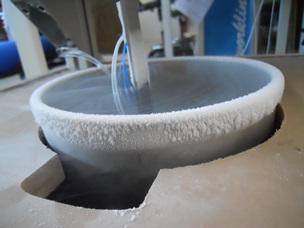HBM signed a contract with ITER – International Fusion Energy Organization – for the supply of optical strain gauges for the ITER Vacuum Vessel. This is one of the largest single orders received at HBM, emphasizing the growing importance and market chances for fiber optic solutions. It is expected to run for two years.
This contract adds to previous orders from ITER to the consortium composed of HBM FiberSensing and Smartec (a RocTest company). The consortium had already won the ITER tender concerning the qualification and supply of fiber optic sensing systems, based on FBG (Fiber Bragg Grating) technology and Fabry-Perot interferometers, to measure strain, displacement and temperature in the Thermonuclear Experimental Reactor's magnets.




